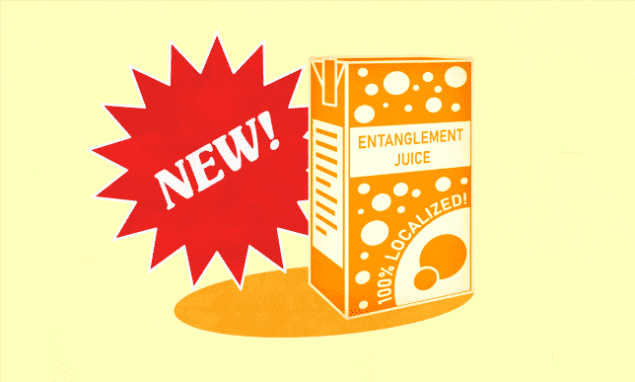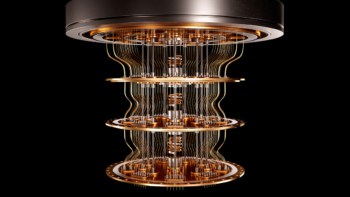
Quantum error correction – a crucial ingredient in bringing quantum computers into the mainstream – relies on sharing entanglement between many particles at once. Thanks to researchers in the UK, Spain and Germany, measuring those entangled states just got a lot easier. The new measurement procedure, which the researchers term “conditional witnessing”, is more robust to noise than previous techniques and minimizes the number of measurements required, making it a valuable method for testing imperfect real-life quantum systems.
Quantum computers run their algorithms on quantum bits, or qubits. These physical two-level quantum systems play an analogous role to classical bits, except that instead of being restricted to just “0” or “1” states, a single qubit can be in any combination of the two. This extra information capacity, combined with the ability to manipulate quantum entanglement between qubits (thus allowing multiple calculations to be performed simultaneously), is a key advantage of quantum computers.
The problem with qubits
However, qubits are fragile. Virtually any interaction with their environment can cause them to collapse like a house of cards and lose their quantum correlations – a process called decoherence. If this happens before an algorithm finishes running, the result is a mess, not an answer. (You would not get much work done on a laptop that had to restart every second.) In general, the more qubits a quantum computer has, the harder they are to keep quantum; even today’s most advanced quantum processors still have fewer than 100 physical qubits.
The solution to imperfect physical qubits is quantum error correction (QEC). By entangling many qubits together in a so-called “genuine multipartite entangled” (GME) state, where every qubit is entangled with every other qubit in that bunch, it is possible to create a composite “logical” qubit. This logical qubit acts as an ideal qubit: the redundancy of the shared information means if one of the physical qubits decoheres, the information can be recovered from the rest of the logical qubit.
Gotta have a little bit of (quantum) orange juice
Developing quantum error-correcting systems requires verifying that the GME states used in logical qubits are present and working as intended, ideally as quickly and efficiently as possible. This new technique does just that.
The efficiency of the conditional witnessing technique relies on two processes. The first is termed localization, and in a recent press release, Farid Shahandeh, a researcher at Swansea University, UK and lead scientist on the study, compares it to making fruit juice. Just as a juicer extracts the essence of the fruit by squeezing it into a small space, he explains, “in many cases quantum correlations in large systems can also be localized in smaller parts of the system”. Without such localization, the task of certifying entanglement across all parts of a system requires checking every possible two-way splitting (“bipartition”) of the system, and the number of bipartitions scales exponentially with n, the number of parts. By exploiting localizable entanglement, however, Shahandeh and colleagues reduced the number of bipartitions that need checking to just n-1.

Quantum error correction achieved using oscillator grid states
The second part of conditional witnessing is the witnessing itself, which functions as a sort of litmus test for entanglement. “Suppose the juicer directly converts the fruit into juice boxes without labels,” says Shahandeh, continuing the analogy. “We don’t know what is inside – it could be apple juice, orange juice or water. One way to tell would be to taste it. Witnessing is the quantum comparison of this, measuring a quantity that tells us whether quantum correlations exist or not.”
The team’s research shows that conditional witnessing works well in principle. If implemented experimentally, it could become a vital tool in the quantum computing research toolbox, says Andrea Rodríguez Blanco, the paper’s first author and a PhD student at the Complutense University of Madrid, Spain. Harnessing GME to find efficient implementations of QEC is a buzzing area of research, and Rodríguez Blanco notes that the uses of conditional witnessing extend beyond quantum computing. “Our method is also valid for a broad variety of protocols including quantum communications and quantum metrology,” she tells Physics World. “The nicest part of the work for me is to develop theoretical concepts that help experimentalists improve the quantum hardware.”
The research is published in PRX Quantum.



